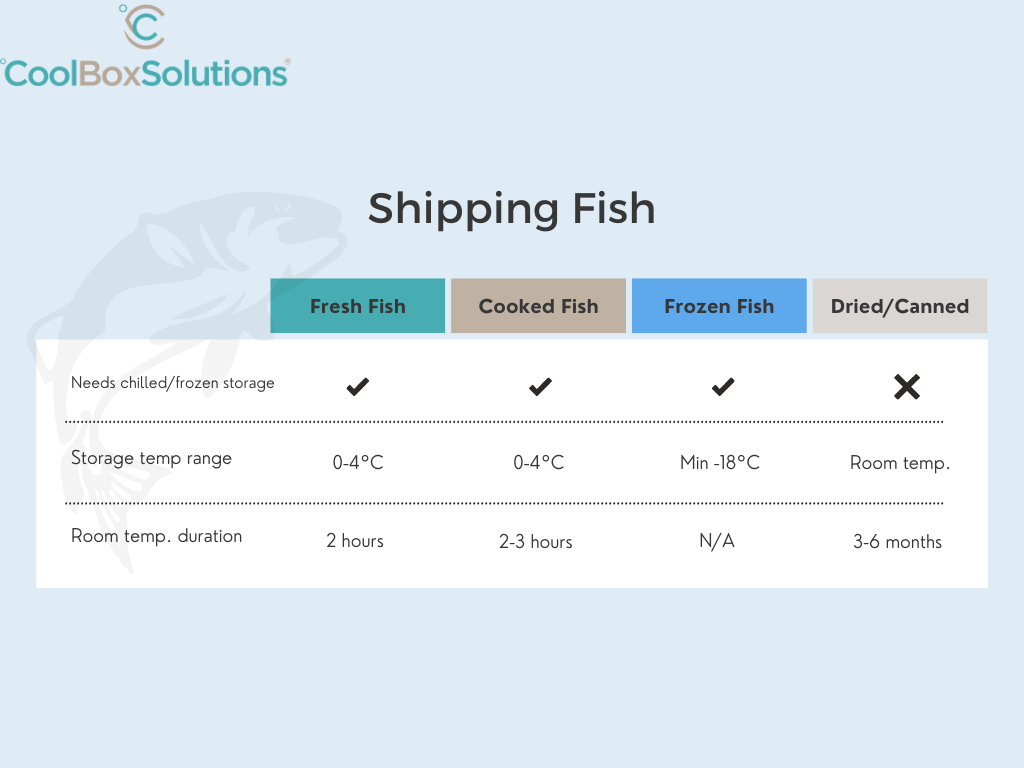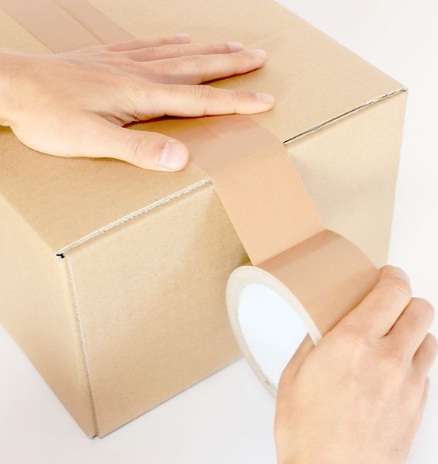
The latest in our range of shipping guides (see our guides to shipping fruit, veg, cheese and more here: http://www.coolboxsolutions.co.uk/category/shipping-guides/), tuna in to ensure you’re shipping your fish products properly.
Fresh fish
There’s long been a big demand for fresh fish, and as such it’s very important to store and ship any raw/fresh fish products properly. Fresh fish can be very easily damaged or spoiled, which can have a knock on effect on profits and customer satisfaction.
Storing fresh fish
Raw/fresh fish should be rinsed thoroughly as soon as possible, cleaning off any contaminants and helping to keep it fresh. It should be kept in a bed of crushed ice ideally, especially if it’s going to be kept in one place for longer than a few hours, and then within a refrigerator.
Even if you aren’t freezing the fish, it needs to be kept at very low temperatures throughout the duration of the time from when it is caught to when it reaches its end consumer. The ideal temperature is around between 0-4°C, and it can only be kept at this for 1-2 days before it either needs to be frozen or cooked.
If raw fish becomes too hot, without intention to cook it, it can spoil. In addition, fresh fish may be home to the Salmonella (food poisoning) bacteria, which grows best in warmer temperatures (from 6°C), so you will definitely need to ensure the temperature does not reach this limit.
Packaging raw/fresh fish
You will need to be relatively gentle with fresh fish, as it damages easily – damaged fish can suffer from loss of skin quality, discolouration and even breakage, so keep it well protected. It’s also very important to handle it separately from any other produce, to avoid cross contamination.
As the fresh fish is being transported chilled, rather than frozen, vacuum packing is a good idea, as this protects the fish from drying out. This also shrinks down the size of the fish when packaged into outer boxes, meaning more can be loaded into the same container.
Cooked fish
If you’re sending fish cooked as opposed to fresh, this changes the game slightly, as cooked fish does last longer at chilled temps than fresh. Cooked fish can be kept at room temperature for around 2 hours, and chilled for around 2-3 days (depending on the temperature). The recommended chilled temperature for cooked fish is around 4°C, for transport and end storage.
If cooked fish is exposed to too warm temperatures, there is a high risk of spoilage and mould growth. It may go grey, or slimy.
Packaging Cooked Fish
Like fresh fish, you need to be gentle with cooked fish, as actually it can become softer and more fragile in the cooking process than in its fresh state.
Cooked fish that has been then included as an ingredient for a meal will be included in the packaging for that meal. Cooked fish that is being transported in its entirely, such as ready to eat salmon for example, is often packaged in rigid containers with tough film lids, to show customers the end produce whilst providing protection to the contents inside.
However the cooked fish is being packaged for end users, the outer packaging for the fish products needs to be tough and able to hold chilled packaging components such as ice packs, to maintain a constant cool temperature inside.
Frozen fish
Shipping frozen fish removes the temperature guidelines for whether the produce is raw or cooked, as the act of freezing ensures that regardless of raw/cooked state, the fish needs to be kept at a constant frozen temperature throughout. However, there are still guidelines for different types of fish.
Freezing fish
If you are undertaking the freezing process, then the best way to freeze fish is to do it ASAP and to do it rapidly, so to avoid large amounts of ice crystals forming. This means that when the fish is defrosted, there is minimal risk of cell walls rupturing, which can lead to dripping during thawing. Each batch of frozen fish should be temperature checked with a meat thermometer before loading.
Packaging frozen fish
Frozen fish, regardless of type, should be packaged securely in boxes or cartons. That being said, oily fish in particular, such as sardines, salmon or trout, need to be vacuum packaged as this stops the oil from being exposed to oxygen, which could lead to rancidity.
It is important to note that once any type of fish is frozen, it needs to be maintained at an optimum frozen temperature throughout, so it is not exposed to adverse temperatures. A minimum of -18°C needs to be kept at all times due to the high levels of water content in the fish.
- If frozen fish is exposed to higher temperatures, then frost may form either on the body of the fish or the packaging it is stored in. this can lead to depreciation of the quality of the fish.
- If frozen fish is stored for excessively long timescales, it can become “freezer burnt”. This gives it poor flavour and a dry texture.
Frozen fish storage/shipping temperatures
- Oily fish –keep between -28 and -18°C
- Lean fish – keep at -Mini20°C
- Filleted fish – keep between –28 and -23°C
Other ways to transport fish
As well as moving fresh, cooked and frozen fish, there are a few other ways to handle fish in such a way that it is not subject to chilled shipping requirements. These include drying and canning. Of course, these do change the texture and shape/taste of the fish, so you have to be sure you have demand from end consumers before exploring these routes.
- Dried fish – does not need to refrigerated and will last between 3-6 months at room temperature without any loss in quality. Some choose to smoke the fish after drying for the smoked taste (most commonly salmon, mackerel and trout).
- Canned fish – canning fish stops the need for chilled transport/storage as long as the tin is completely sealed. The metals used in the can itself can corrode if kept in moist environments, so it is best to move and store canned goods in dry conditions at room temperature.
Resources:
